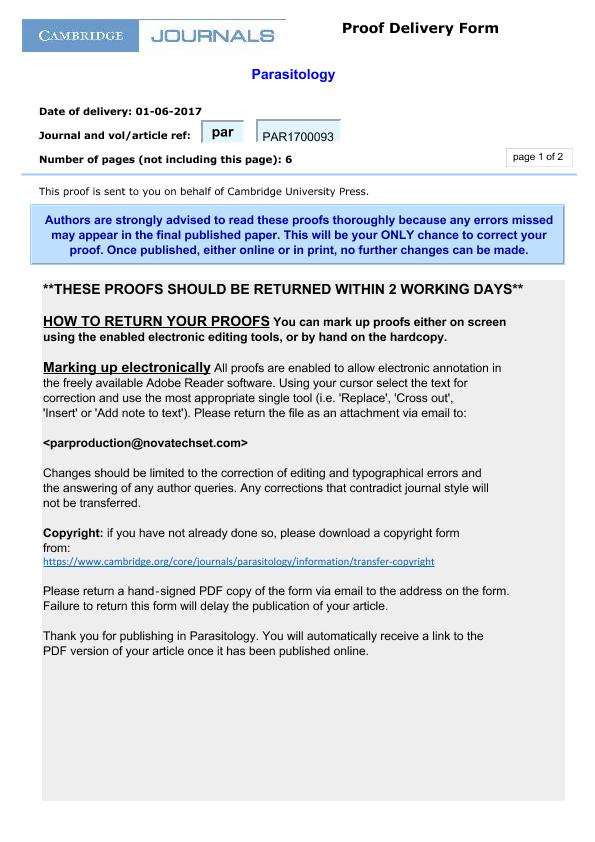Artículo
New parasitological findings for pre-Hispanic camelids
Fecha de publicación:
11/2017
Editorial:
Cambridge University Press
Revista:
Parasitology
ISSN:
0031-1820
e-ISSN:
1469-8161
Idioma:
Inglés
Tipo de recurso:
Artículo publicado
Clasificación temática:
Resumen
SUMMARY Paleoparasitological examination provides information of parasite-host associations in the past, shedding light on the geographical origin of some parasites, on the possible dispersal routes and on some of the processes that modelled the parasitic communities. The aim of the present study was to examine parasite remains present in camelid coprolites collected from the archaeological site Alero Destacamento Guardaparque, Patagonia and to discuss the paleoparasitological findings in a biogeographical and paleoecological context. Coprolites were collected from different stratified layers dating from middle to late Holocene, a period covering approximately 7000 years. Paleoparasitological examination revealed the presence of eggs attributed to Lamanema chavezi or Nematodirus lamae, Nematodirus spathiger, Dictyocaulus sp., eggs of two unidentified capillariids, Strongylus-Type eggs and oocysts of Eimeria macusaniensis. Enteric parasites of camelids had not changed significantly during the Holocene up to the entry of introduced livestock, although environmental conditions fluctuated greatly throughout this period, indicating the stability of these associations over time. This is the first finding of N. spathiger and Dictyocaulus sp. in paleoparasitological record and their presence are associated with the interaction of camelids with introduced livestock, which likely allowed parasite host switching. In the present study, the zoonotic importance of parasites of camelids is also discussed.
Palabras clave:
Camelids
,
Holocene
,
Host Switching
,
Introduced Livestock
,
Paleoparasitology
Archivos asociados
Licencia
Identificadores
Colecciones
Articulos(IIMYC)
Articulos de INSTITUTO DE INVESTIGACIONES MARINAS Y COSTERAS
Articulos de INSTITUTO DE INVESTIGACIONES MARINAS Y COSTERAS
Citación
Taglioretti, Verónica; Fugassa, Martín Horacio; Rindel, Diego Damián; Sardella, Norma Haydee; New parasitological findings for pre-Hispanic camelids; Cambridge University Press; Parasitology; 144; 13; 11-2017; 1763-1768
Compartir
Altmétricas




